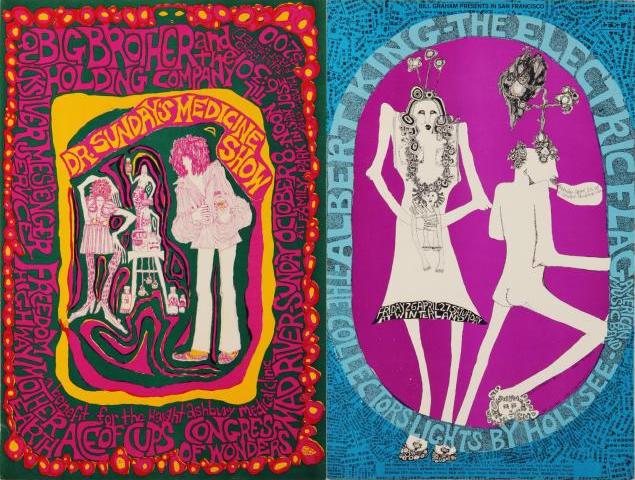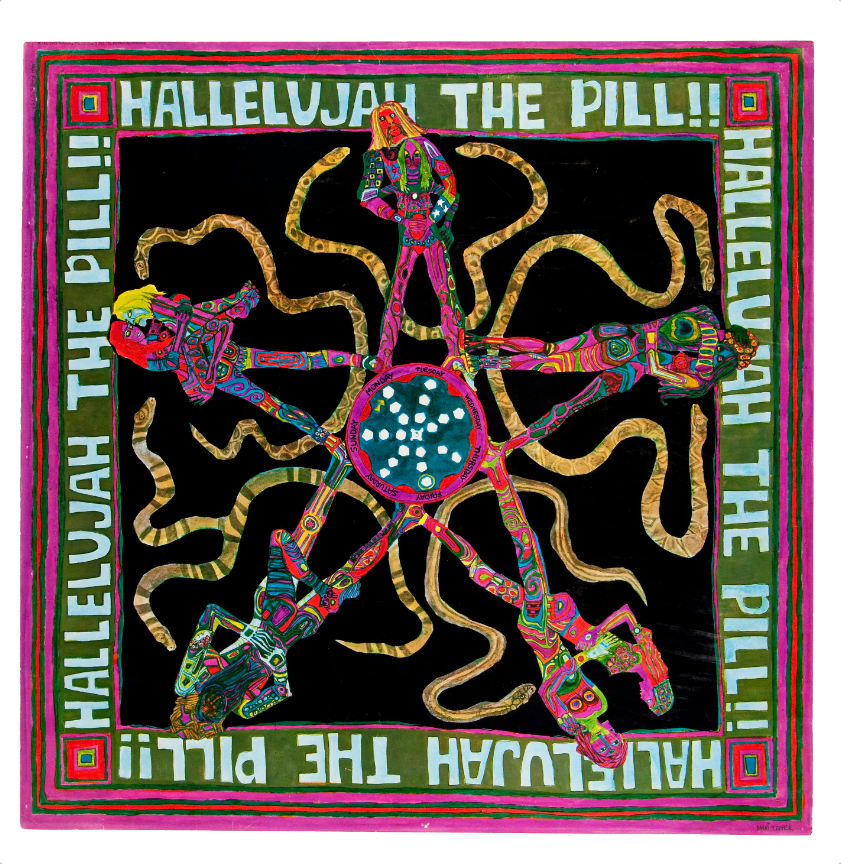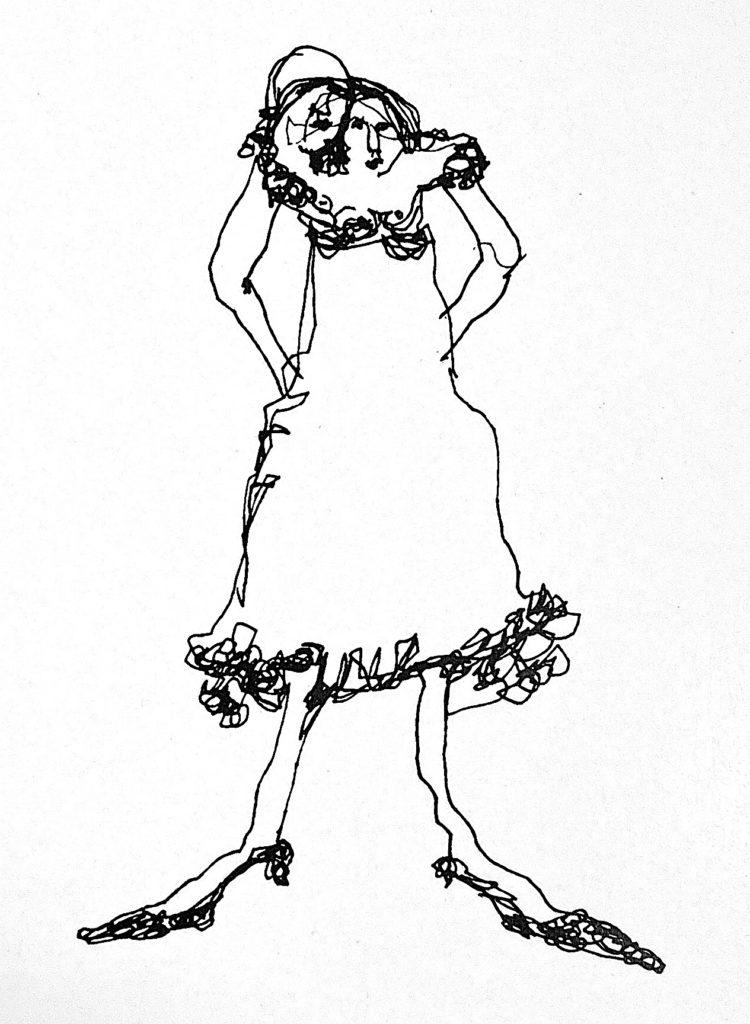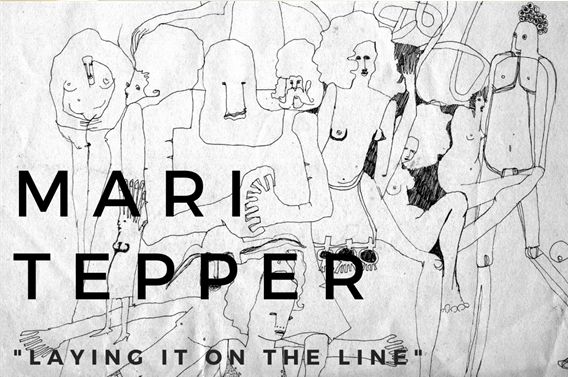
As a teenager growing up in San Francisco’s Haight-Ashbury neighborhood during the mid-1960s, Mari Tepper might have been just another poster child for that colorful decade. Instead, Tepper designed many of the posters that defined it.
Today, Tepper is best known to most rock-poster collectors for those posters, which were widely distributed from 1966 to 1968. But a new exhibition at the Haight Street Art Center titled Laying it on the Line, which opens on Saturday June 18 and runs through Sunday August 14, also explores more than half a century’s worth of the artist’s other work, from her figurative drawings and paintings to the sculptures she made from bread dough. Together, these largely unheralded pieces, which have survived uprootings, a recent fire, and the water damage that ensued, reveal an artist whose pen is sharpest when spilling ink in the cause of social justice, equity, and human rights, whether to housing, mental health care, or one’s sexuality.
By the time Tepper graduated from Lowell High School, she had already designed posters for theater groups and rock bands. That precociousness might have been a prelude to a conventionally successful career, but the decades that followed were often difficult for Tepper, as she navigated her own housing and mental health issues, and awakened to her sexuality. Through it all, she pushed herself as an artist, imbuing her work with a sense of style and humor that could be surreal, quixotic, or both. After all, as her feline alter ego put it in a panel for an unpublished comic book called Myrrtle and Purrlee, Tepper has been searching for nothing less than the fourth primary color.

During 1966, Tepper was something of a celebrity in the Haight thanks to her “Free Frame of Reference” installation on the façade of a Diggers location, illustrations for the Oracle, and exhibitions at the Print Mint and Psychedelic Shop. In 1967, she would become even better known for her “Hallelujah the Pill!!” mandala, which depicted a quintet of brilliantly hued couples trying out various sexual positions. Not surprisingly, this psychedelicized update of tantric sex sold tens of thousands of copies in headshops around the country.
In 1968, Tepper designed her only posters in the first numbered series for Bill Graham (BG-117 and BG-118). Tepper could have continued to work for the impresario, whom she has described as both “kind” and her “first boss,” but by the end of that year, Tepper had left San Francisco for Santa Fe, New Mexico, leaving all her posters, including those designed for Graham, behind.
It was in Santa Fe that Tepper began to make figurative sculptures out of bread dough. As Tepper described it in an interview with the Haight Street Art Center in 2018, she decided to work with bread because it was cold where she lived. Apparently, her controlling common-law husband wouldn’t let Tepper put wood in the stove unless she was cooking, so she started “baking art,” as she put it, to stay warm and keep busy.

Bread-dough sculptures aside, Tepper’s primary medium has been ink on paper. In her drawings, she likes to let her lines do the talking, seemingly without too much direction on her part. As such, her style is almost an anti-style, in which imperfect circles, wandering lines, and assorted squiggles and marks are left to coalesce—or not—as they please.
Fortunately for us, coalesce they do, animating themselves into distinctive, sometimes androgynous characters right before our eyes, albeit ones that often sport too many fingers, toes, and breasts. Tepper strips her drawings to their essentials—line and form—and thanks to the trust the artist appears to place in these two elements to create a third, the result is a unique sensibility that can swing from the macabre to the whimsical. This ocular alchemy is one of Tepper’s many gifts, but it is also the product of diligently practiced dexterity. Her work may look casual, at times even a bit out of control, but the surprising ways in which her compositions come together is no accident.
A number of the drawings and watercolors in Laying it on the Line feature musicians on stage, usually at the Keystone Korner, which she frequented in the late 1970s. Even though Tepper is associated with rock ‘n’ roll because of her early posters for Big Brother and the Holding Company and the Grateful Dead, her first love musically has always been jazz. Some of the performers Tepper sketched at the Keystone and elsewhere include saxophonists Jackie McLean and Pharoah Sanders, as well as keyboard legend Dr. John.
Laying it on the Line opens at the Haight Street Art Center on Saturday June 18. The opening runs from 3 to 8 pm, and Tepper will be on hand.

Extremely well written and informative!